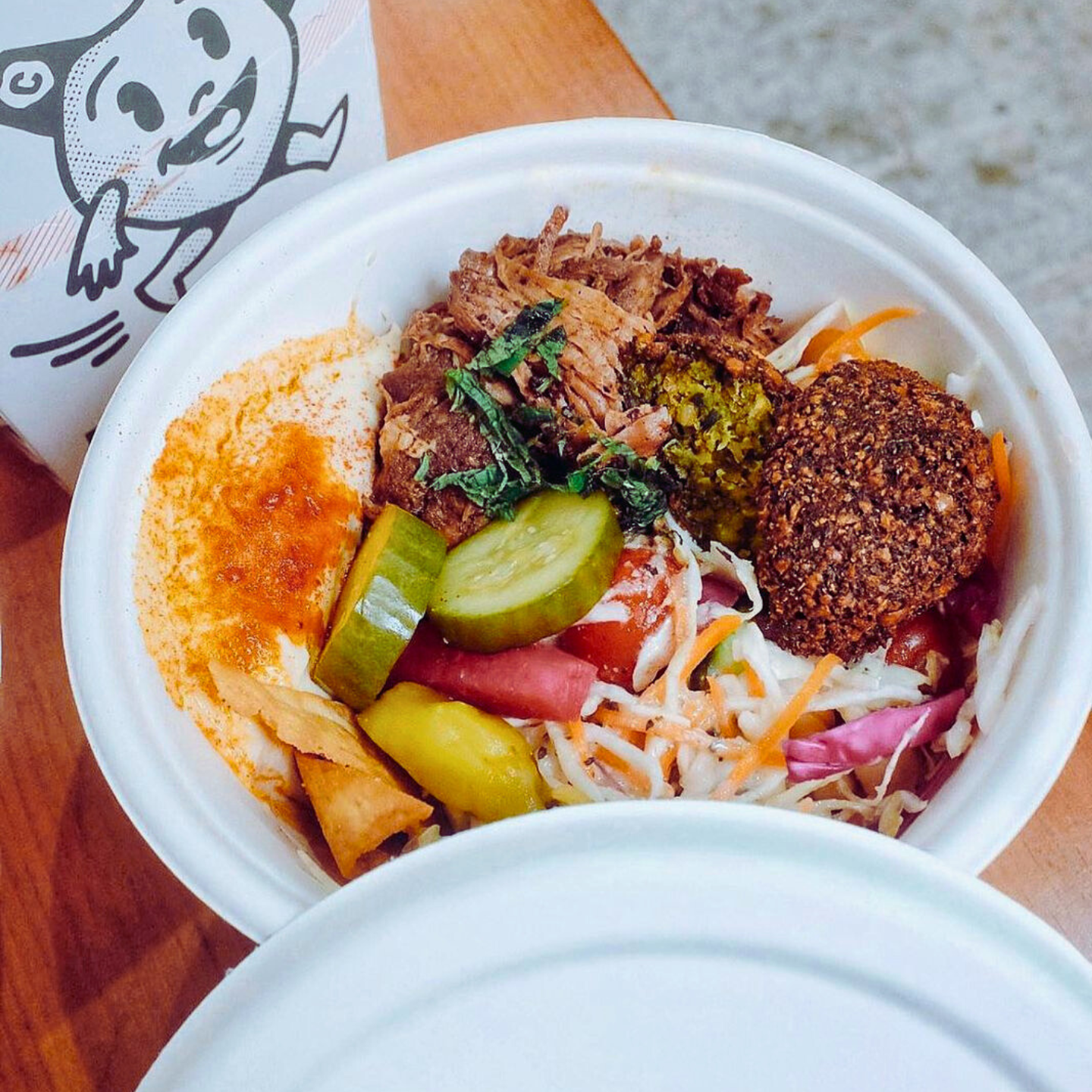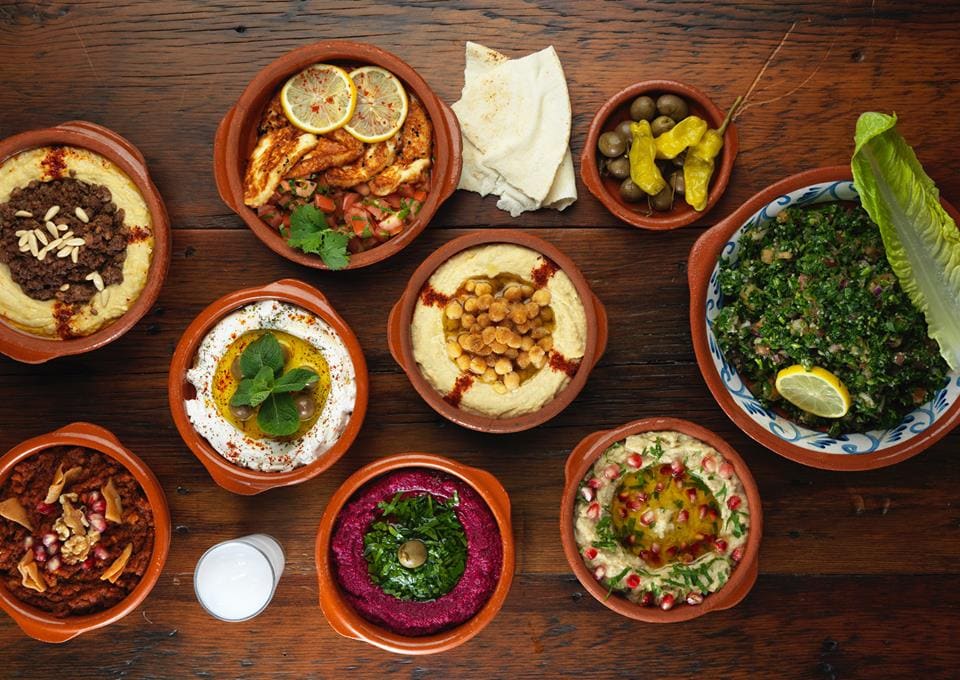Checking out the Diversity of Middle Eastern Food and Halal Food: A Culinary Trip
When you think about Middle Eastern food, a globe of diverse flavors and abundant traditions comes to mind. Each recipe informs a story, formed by the land and its individuals. As you discover the principles of halal and its influence on these culinary techniques, you'll discover a vivid tapestry of active ingredients and methods. What links exist in between these dishes and the societies they stand for? The solution may surprise you.
The Essence of Middle Eastern Food: Tastes and Active Ingredients
Middle Eastern cuisine ruptureds with lively tastes and abundant components that move your taste to distant lands. When you immerse yourself in this culinary globe, you'll find a fascinating mix of spices like cumin, coriander, and sumac, each adding deepness to every dish. You'll savor the freshness of natural herbs such as parsley and mint, raising meals with their fragrant high qualities.

As you discover the variety of healthy proteins, from tender lamb to succulent hen, you'll discover that barbecuing and marinading boost their tastes beautifully. Whether it's a cozy pita stuffed with full-flavored fillings or a hearty stew, the active ingredients in Middle Eastern food develop a symphony of preferences that welcomes you to savor every bite.
Conventional Food Preparation Strategies: A Culinary Tradition
Food Preparation between East is steeped in custom, with techniques passed down via generations that show the area's abundant background and society. You'll locate that lots of techniques concentrate on slow-moving food preparation and public sharing, emphasizing the significance of family members and community in meals. Methods like cooking over open flames, marinating meats in flavors, and using clay pots for stews display the flavors fundamental in neighborhood components.
As you dive much deeper, you'll uncover the art of cooking, from flatbreads to pastries, usually carried out in public ovens, including an unique touch to the cooking experience. The use of spices is likewise a crucial technique; mixing them just right can boost any meal.
These time-honored methods not just protect the significance of Middle Eastern food yet also attach you to the vibrant tales and traditions of the people who have actually prepared these dishes for centuries.
The Duty of Halal in Middle Eastern Food
When discovering the rich tapestry of Middle Eastern food, you'll rapidly discover that halal concepts play an important duty fit the food society (Catering Vancouver). Halal, indicating "acceptable" in Arabic, guides exactly how food is sourced, prepared, and consumed. This indicates only certain pets can be consumed, and they have to be butchered in a humane and ceremonial way
As you dive much deeper, you'll see that halal isn't practically nutritional limitations; it shows a wider moral dedication to health and wellness and sustainability. Numerous Middle Eastern recipes stress fresh ingredients, vivid flavors, and aromatic natural herbs, aligning completely with halal practices.
Consuming halal commonly cultivates a feeling of area and regard, as meals are shared amongst household and pals. Whether you're appreciating a spiced kebab or a fragrant rice meal, recognizing halal's duty improves your cooking experience, connecting you to the customs and worths that specify Middle Eastern food.
Signature Dishes From Various Regions
As you check out the diverse regions of the Middle East, you'll discover that each location boasts its own signature meals, showing regional components and culinary customs. In Lebanon, you can not miss out on the flavorful tabbouleh, a fresh salad made with parsley, bulgur, and tomatoes. Traveling to Syria, and you'll experience kibbeh, which incorporates ground meat and spices, commonly served with yogurt.
In the Gulf states, savor the rich machboos, a spiced rice recipe with meat or fish and shellfish. Endeavor to Turkey, where you'll delight in the delicious döner kebab, skillfully experienced and served in numerous ways.
Don't forget Iran, home to the fragrant saffron-infused rice recipe called tahchin, layered with poultry or lamb. Each dish tells a story, welcoming you to experience the unique tastes and cultures of the Middle East. Accept this culinary trip, and allow your taste discover!
The Influence of Culture and Faith on Middle Eastern Cuisine
Society and faith play a necessary role in forming Middle Eastern food, affecting whatever from active ingredient visit their website options to cooking approaches. Islamic dietary laws dictate halal practices, leading to details approaches of animal massacre and food prep work.
Moreover, festivals and spiritual observances usually determine seasonal active ingredients and cooking styles. Throughout Ramadan, for example, you'll find an abundance of dishes developed for damaging quickly, showcasing common traditions. Flavors like cumin, coriander, and saffron are staples, each bring cultural importance. When you discover Middle Eastern cuisine, you're not just tasting food; you're experiencing a rich narrative woven with culture and belief, where every bite narrates of heritage, neighborhood, and spiritual link.

Exploring Street Food: A Taste of Everyday Life
Street food is a lively expression of everyday life in the center East, using a peek right into the region's cooking spirit. As you walk through bustling markets or vivid streets, you'll experience a wide variety of alluring fragrances and flavors. Take a minute to savor newly made falafel, crunchy on the outside and tender within, or indulge in shawarma, adeptly marinated and grilled to excellence.
Don't miss out on the chance to attempt kebabs sizzling on skewers, served with cozy pita bread and tangy sauces. Suppliers usually offer up quick bites like mouthwatering sambousek or wonderful kunafa, guaranteeing there's something for everybody. Street food isn't nearly taste; it has to do with connection. You'll see locals collecting, sharing laughter, and appreciating their meals with each other. This lively ambience draws you in, making you really feel part of the community. So go ahead, submerse yourself in the world of Middle Eastern road food and experience its rich tastes firsthand.
Celebrations and Community: Food as an Unifying Force
While food commonly brings people together, between East, it functions as the heart beat of parties and area gatherings. Imagine yourself at a vivid celebration, bordered by the scent of spiced kebabs click over here now and fresh baked bread. You 'd locate family members sharing platters of hummus and tabbouleh, each recipe telling a tale of tradition and love.
Throughout Ramadan, the iftar dishes join family and friends as they damage their fast together, stressing appreciation and connection. Wedding events feature intricate feasts, where guests indulge in sweets like baklava and kunafa, celebrating love and unity.
You could see that food isn't simply sustenance; it's a sign of hospitality and togetherness (Syrian food Vancouver). Whether it's a basic celebration or a grand event, the act of sharing a meal cultivates bonds, strengthens partnerships, and develops enduring memories. In the Middle East, food genuinely ends up being a unifying force that transcends limits and commemorates the splendor of neighborhood
Frequently Asked Inquiries
What Are the Health Advantages of Middle Eastern Cuisine?
Middle Eastern cuisine uses many health and wellness advantages. You'll appreciate fresh ingredients, healthy fats, and plenty of flavors, promoting heart wellness and digestion. Plus, its plant-based choices can improve your overall nutrition and energy levels.
How Can I Find Halal-Certified Dining Establishments Outside the Middle East?
You can discover halal-certified restaurants outside the Middle East by utilizing applications like Zabihah or HalalTrip, examining local listings, and asking for recommendations from Muslim neighborhoods or buddies knowledgeable about the area's eating alternatives.
Are There Vegetarian or Vegan Middle Eastern Cuisines?
Yes, you'll find lots of vegan and vegan Middle Eastern meals. Recipes like falafel, tabbouleh, and baba ghanoush are scrumptious alternatives. These meals showcase the area's rich tastes while satisfying plant-based diets. Enjoy!
What Are Common Misconceptions Regarding Middle Eastern Food?

You might believe Middle Eastern food is all regarding meat, yet that's not true. Several recipes display grains, legumes, and fresh vegetables. Furthermore, flavors and flavors vary extensively, disproving the idea of harmony in cuisine.
Just How Do Regional Climates Affect Middle Eastern Cooking Styles?
Regional environments see this site considerably affect cooking designs between East. You'll discover warmer areas favor smoked meats and flavors, while cooler areas stress passionate stews and breads, showcasing the adaptability of neighborhood ingredients and practices.